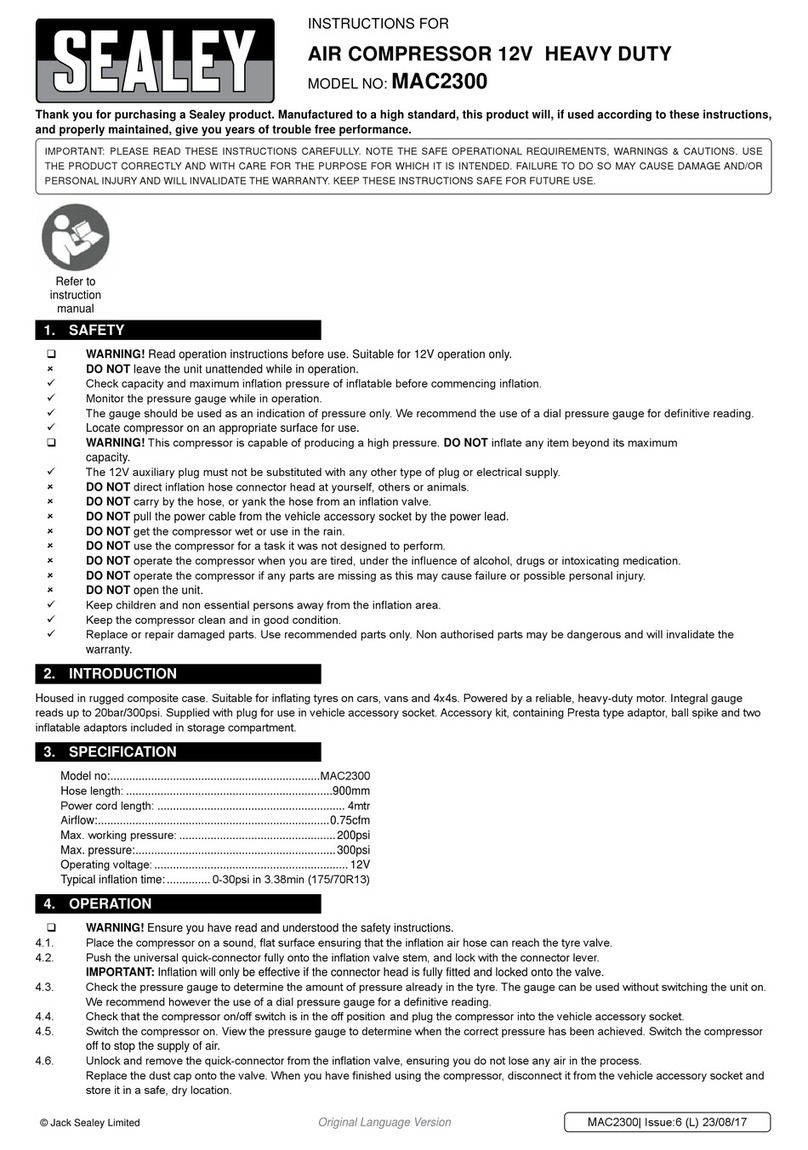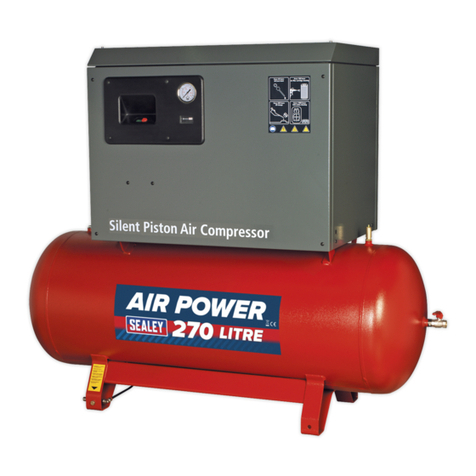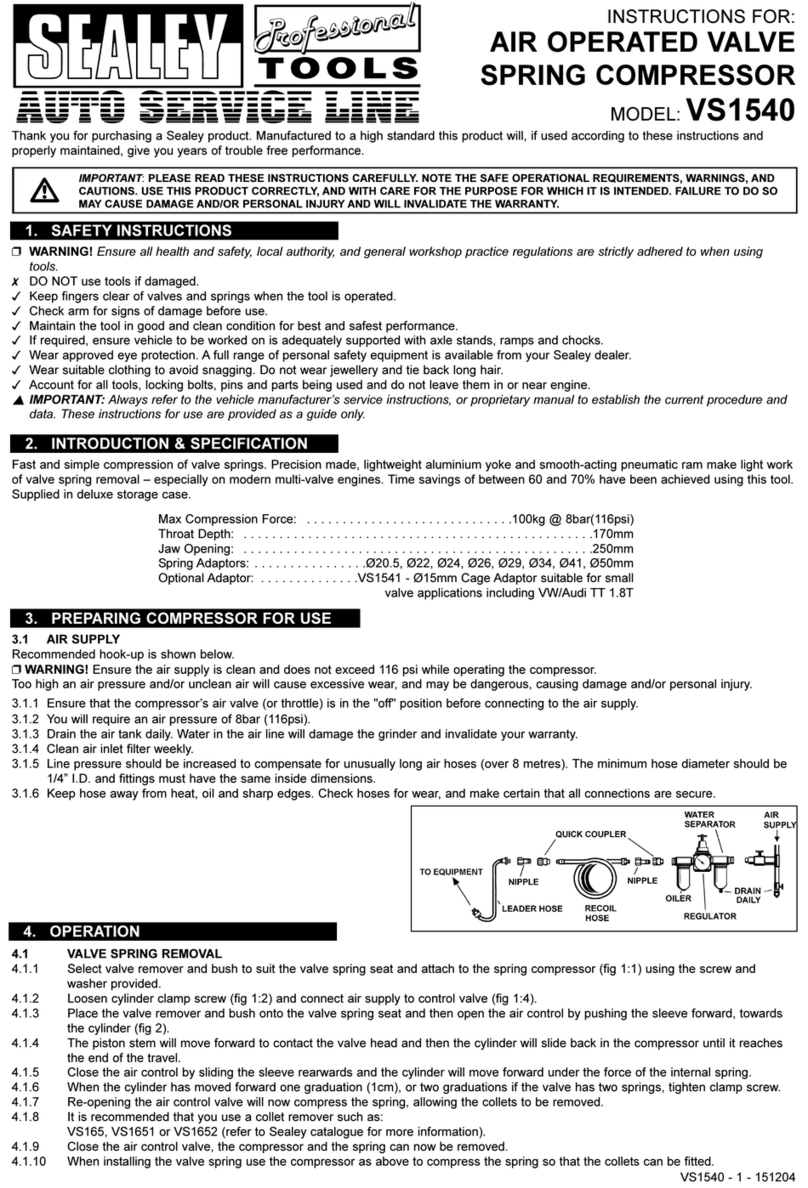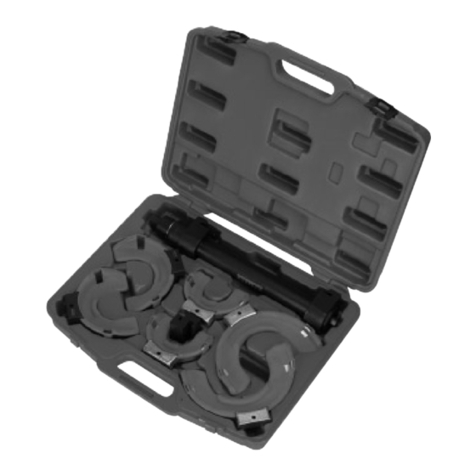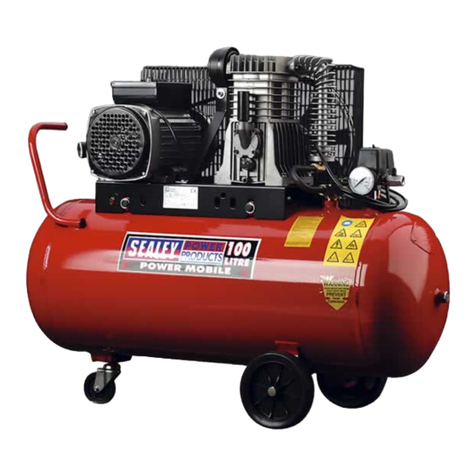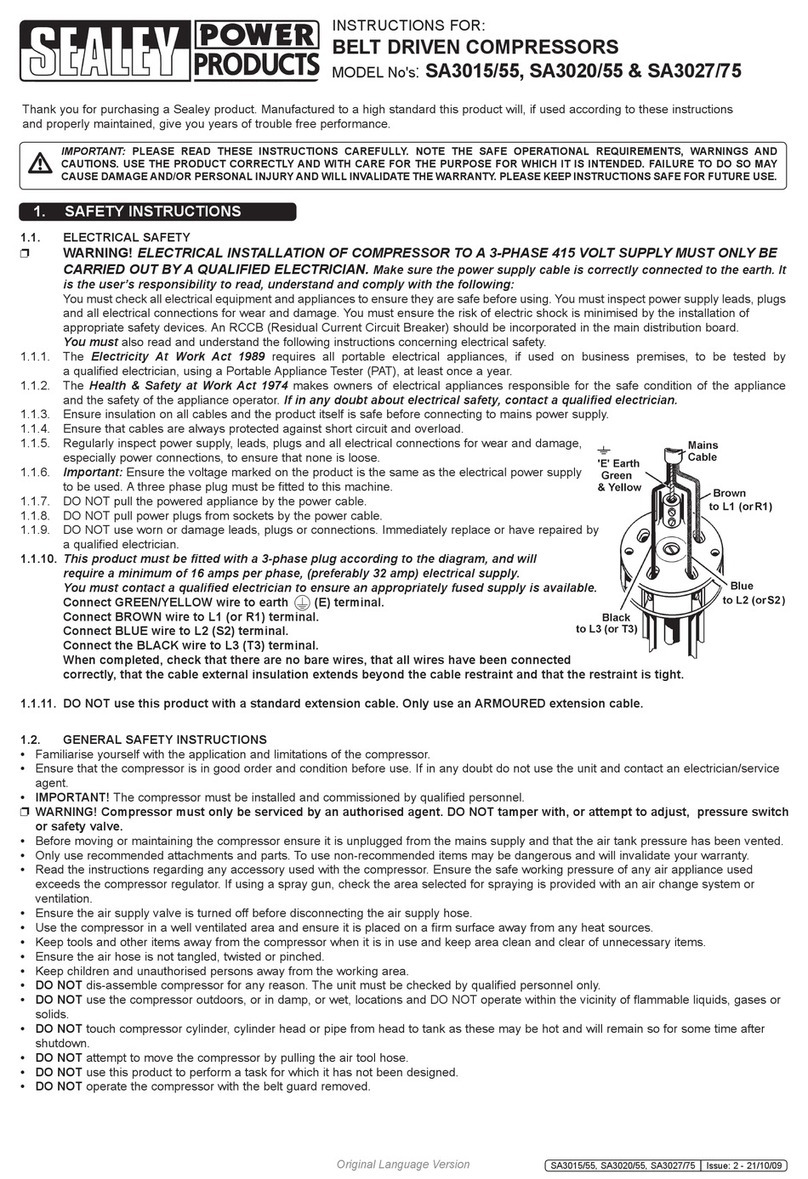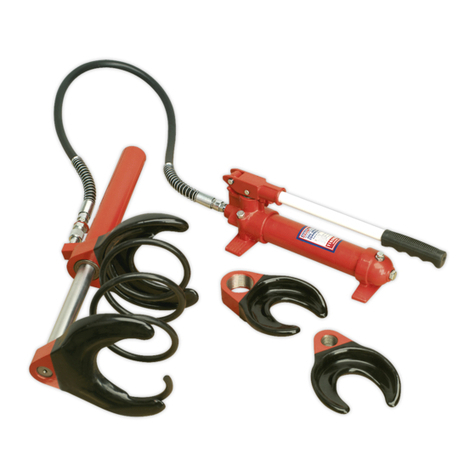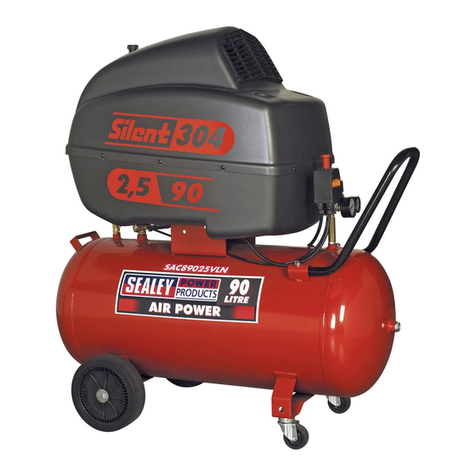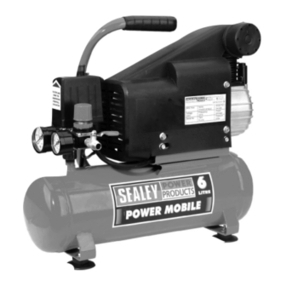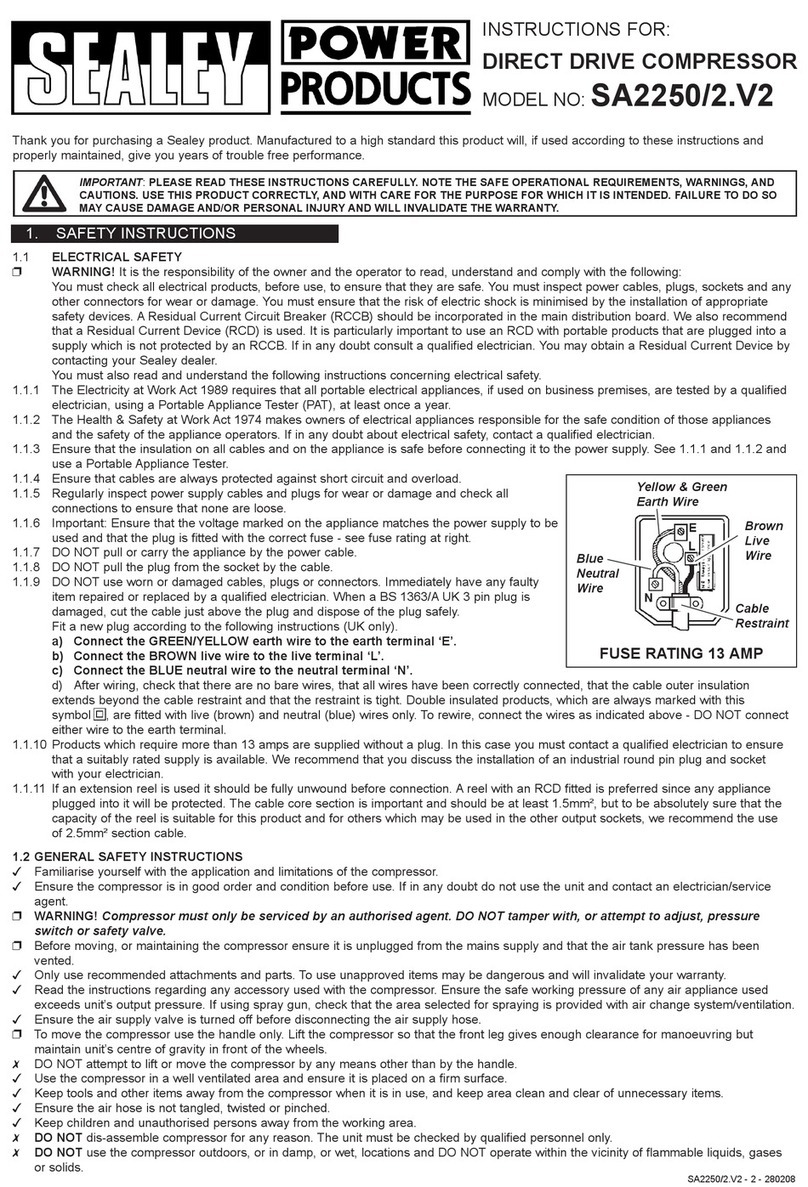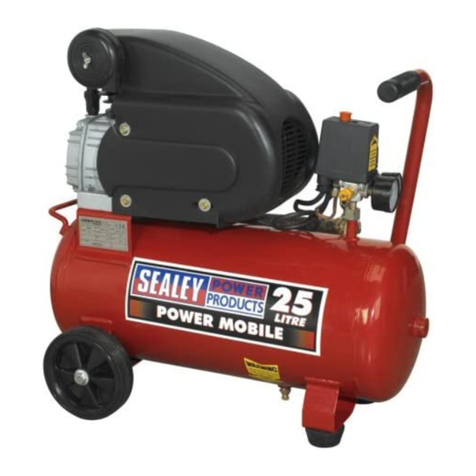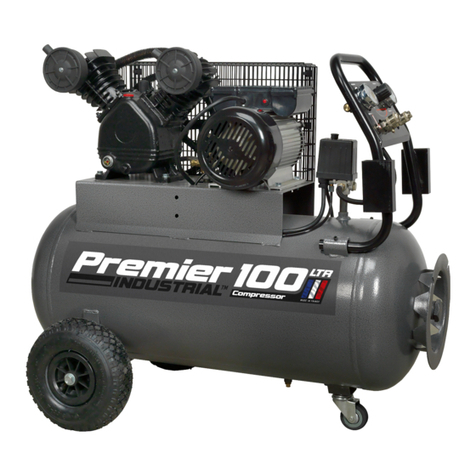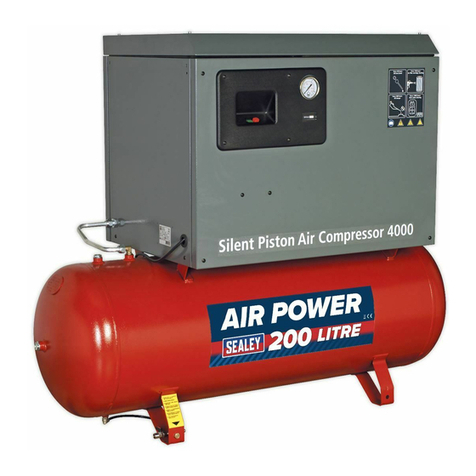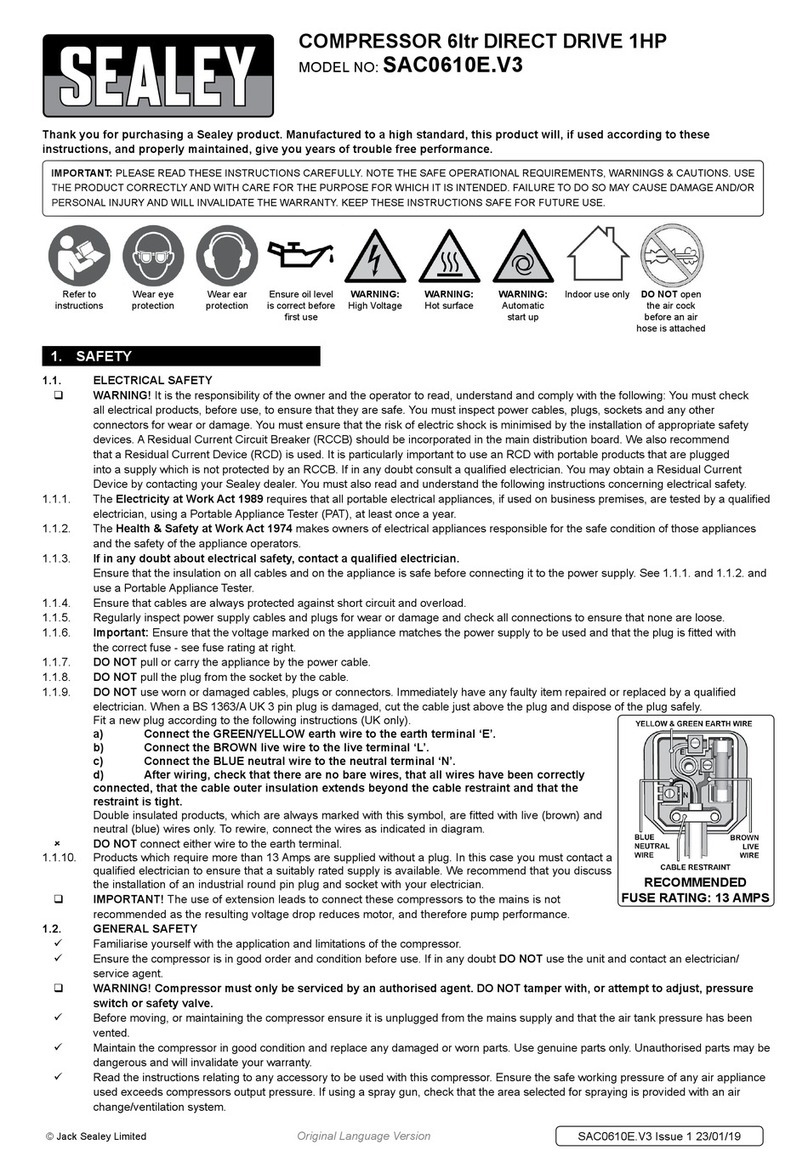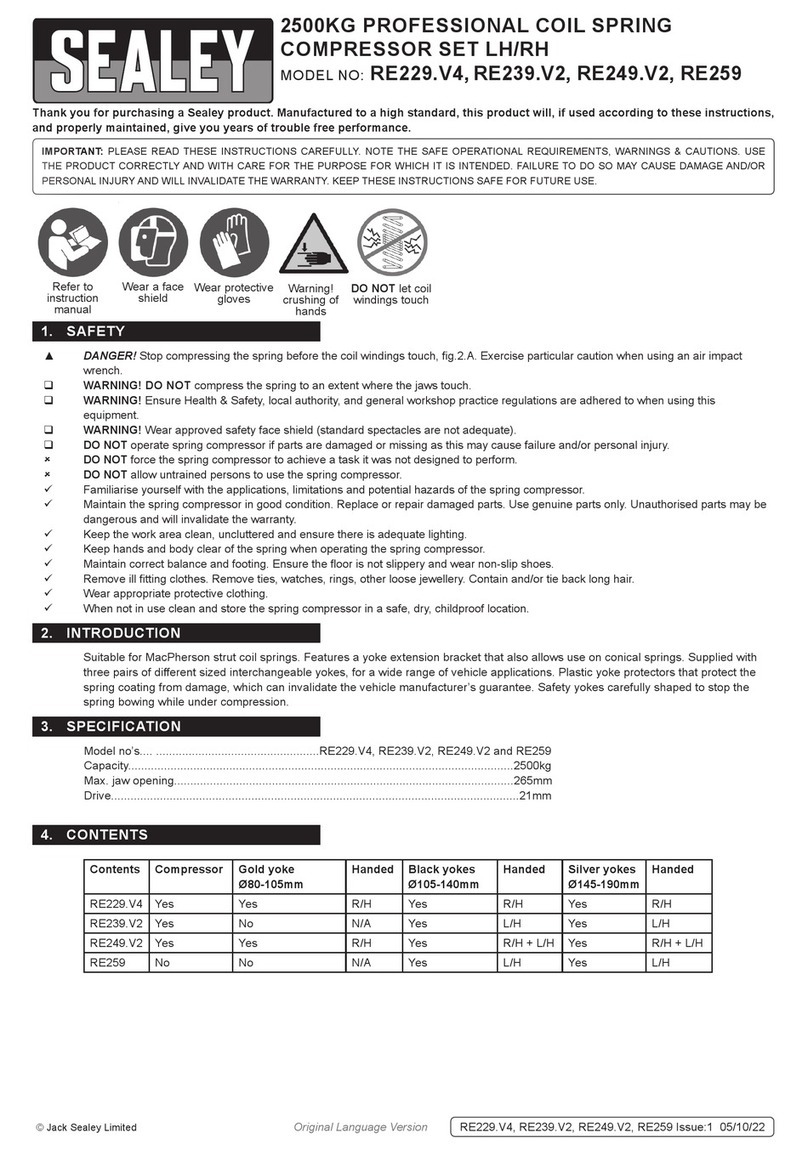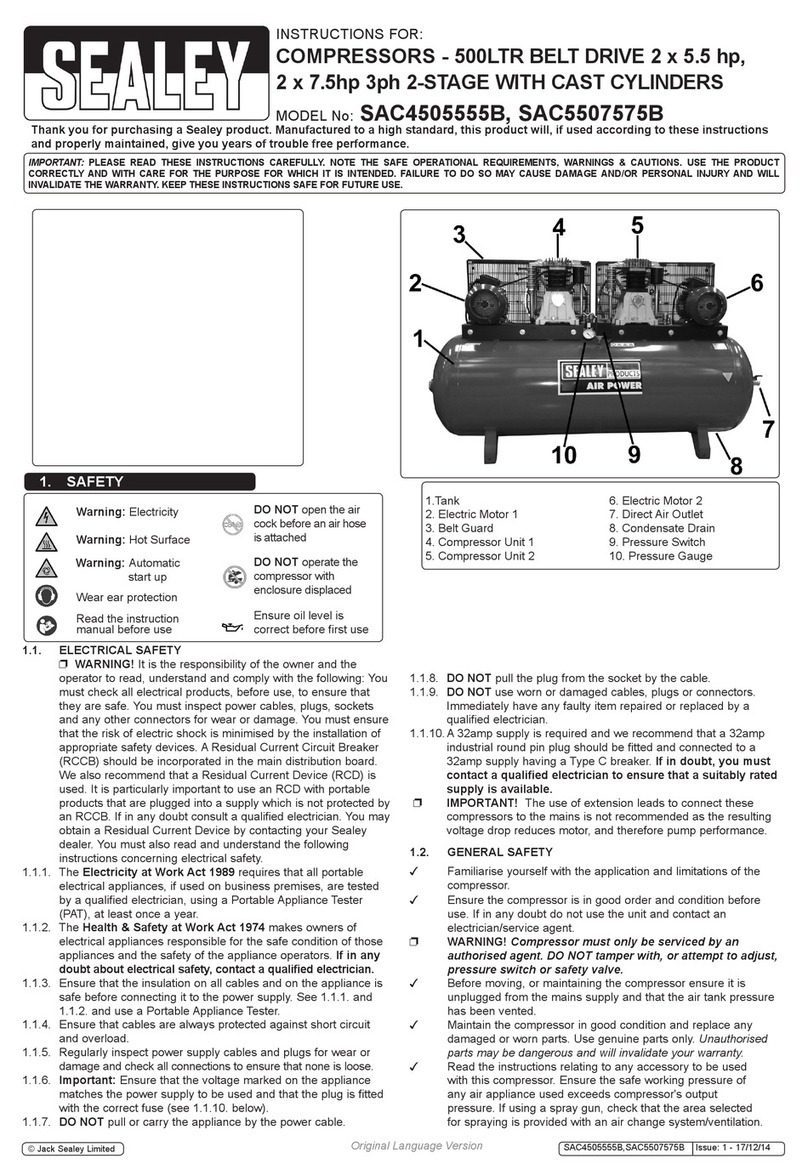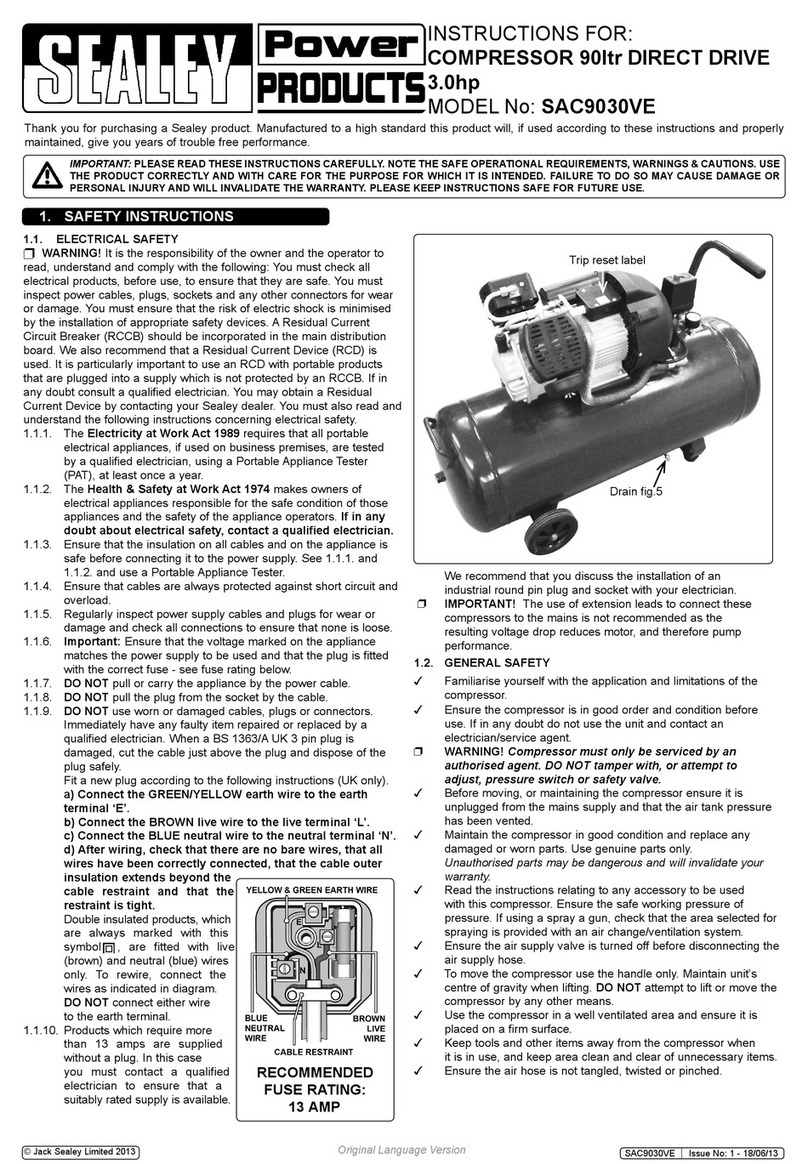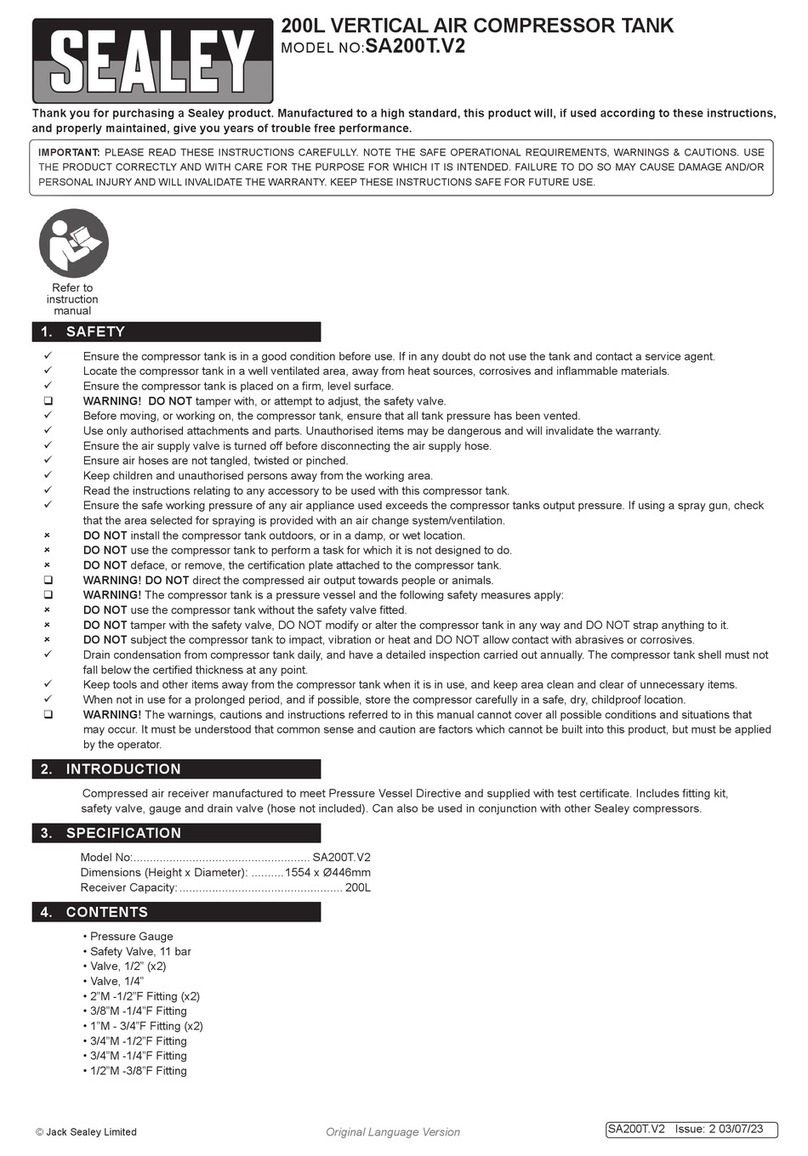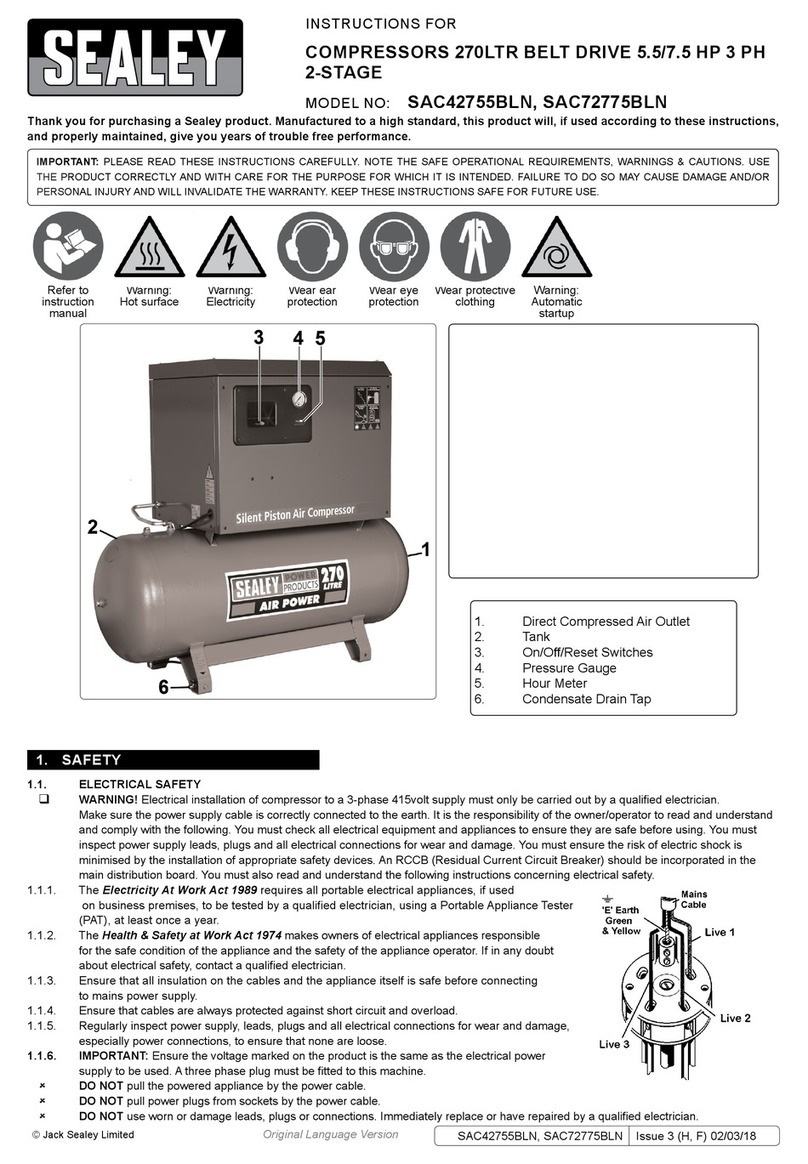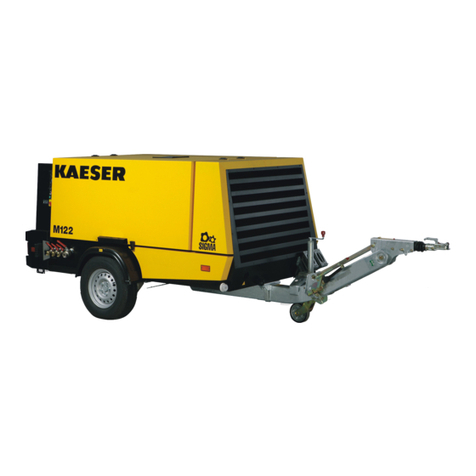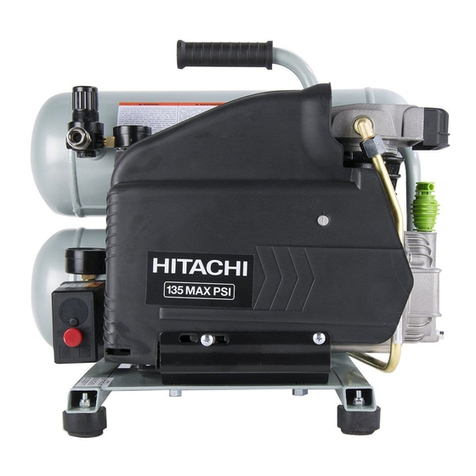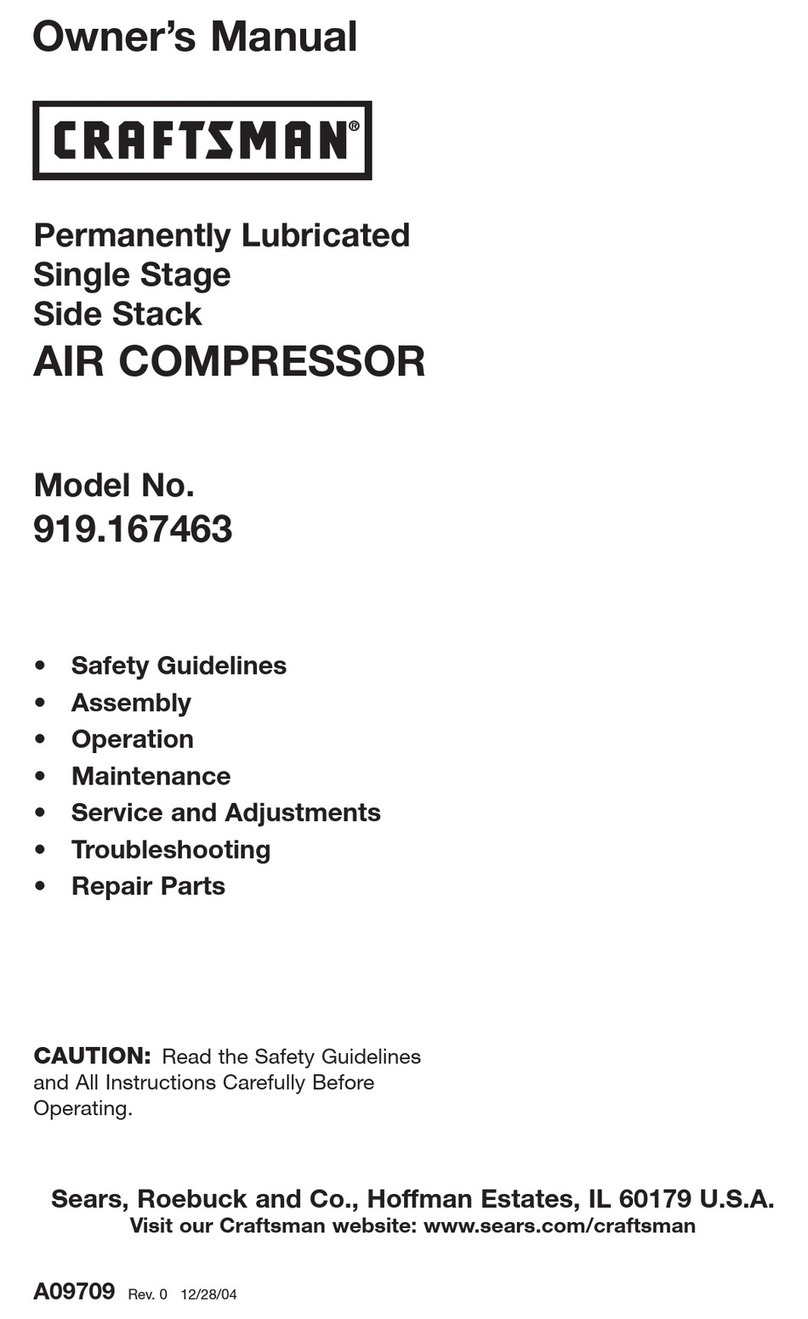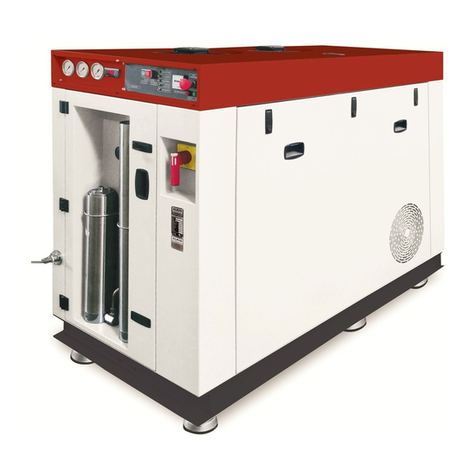
Refer to instruction
manual
Wear eye
protection Wear ear
protection
Warning:
hot surface
Wear protective
gloves
Thank you for purchasing a Sealey product. Manufactured to a high standard, this product will, if used according to these instructions,
and properly maintained, give you years of trouble free performance.
IMPORTANT: PLEASE READ THESE INSTRUCTIONS CAREFULLY. NOTE THE SAFE OPERATIONAL REQUIREMENTS, WARNINGS & CAUTIONS. USE
THE PRODUCT CORRECTLY AND WITH CARE FOR THE PURPOSE FOR WHICH IT IS INTENDED. FAILURE TO DO SO MAY CAUSE DAMAGE AND/OR
PERSONAL INJURY AND WILL INVALIDATE THE WARRANTY. KEEP THESE INSTRUCTIONS SAFE FOR FUTURE USE.
SA5040 SA5055 Issue:3(HF) - 04/04/18
Original Language Version
© Jack Sealey Limited
COMPRESSOR 50LTR BELT DRIVE PETROL
ENGINE 4.0HP, 5.5HP
MODEL No: SA5040, SA5055
1. SAFETY
Familiarise yourself with the application and limitations of the compressor.
Ensure that the compressor is in good order and condition before use. If in any doubt do not use the unit and contact a service agent.
WARNING! Compressor must only be serviced by an authorised agent. DO NOT tamper with, or attempt to adjust the pressure
switch or the safety valve.
Before moving or maintaining the compressorensure that the air tank pressure has been vented.
Only use recommended attachments and parts. Using unapproved items may be dangerous and will invalidate the warranty.
Read the instructions for any accessory used with the compressor. Ensure that the safe working pressure of any air appliance used,
exceeds the output pressure of the compressor. If using a spray gun, check that the area selected for spraying is provided with an air
change system or adequate ventilation.
Ensure that the air supply valve is turned off before disconnecting the air supply hose.
To move the compressor use the front roll bar. Lift the compressor so that the front legs have enough clearance for manoeuvring but
maintain the centre of gravity in front of the wheels. DO NOT attempt to lift or move the compressor by any other means.
Use the compressor in a well ventilated area and ensure it is placed on a firm surface. Remember that the compressor engine
produces harmful exhaust fumes.
Keep tools and other items away from the compressor when it is in use, and keep work area clean.
Ensure that air hoses are not tangled, twisted or pinched.
Keep children and unauthorised persons away from the work area.
DO NOT dismantle the compressor for any reason if you are not qualified to do so. The unit must be checked by qualified personnel only.
DO NOT operate the compressor within the vicinity of flammable liquids, gases or solids.
DO NOT touch compressor cylinder, cylinder head or pipe from head to tank as these may be hot and will remain so for some time
after shutdown.
DO NOT operate the compressor without all safety guards in place.
DO NOT attempt to move the compressor by pulling the air tool hose.
DO NOT use the compressor for a task for which it is not designed.
DO NOT deface the certification plate attached to the compressor tank.
DANGER! DO NOT direct the output jet of air towards people or animals.
DO NOT operate the compressor without an air filter.
DO NOT allow anyone to operate the compressor unless they have received full instructions.
For safety instructions relative to the maintenance and use of the petrol engine - refer to the engine manufacturer’s handbook supplied.
DO NOT check the ignition system by removing the spark plug or spark plug lead. Use specific tester or contact service agent.
WARNING! DO NOT touch the spark plug or plug lead whilst the engine is running - severe, potentially fatal, electric shock
may result.
Ensure that engine fuel is stored in an approved container. For long term storage ensure that the fuel tank is drained and that the
compressor is adequately protected.
DO NOT smoke or have any naked flames nearby whilst re-fuelling.
DO NOT leave the compressor operating unattended.
DO NOT remove the fuel cap, or try to refuel whilst the engine is running. Stop the engine and allow it to cool for two minutes before
attempting to refuel.
DO NOT refuel in a closed or poorly ventilated environment as there is a danger of explosion or fire. Refuel outdoors.
DO NOT operate the compressor if there is a fuel leak. Move the unit to a safe area, where there is no risk of ignition, until the leak has
been rectified and the machine is dry.
DO NOT start the engine if there are any flammable materials near the exhaust system or in the path of the exhaust gases.
DO NOT block the engine ventilation grilles.
DO NOT cover the compressor or restrict air flow around the machine whilst it is operating.
WARNING! The air tank is a pressure vessel and the following safety measures apply:
DO NOT tamper with the safety valve and DO NOT modify or alter the tank in any way and DO NOT strap anything to the tank.
DO NOT subject the tank to impacts, vibration or to heat and DO NOT allow contact with abrasive or corrosive materials.
DO drain condensation from tank daily and inspect inside walls for corrosion every 12 months.
The tank shell must not fall below the certified thickness at any point.
When not in use, store the compressor carefully in a safe, dry, childproof location.
